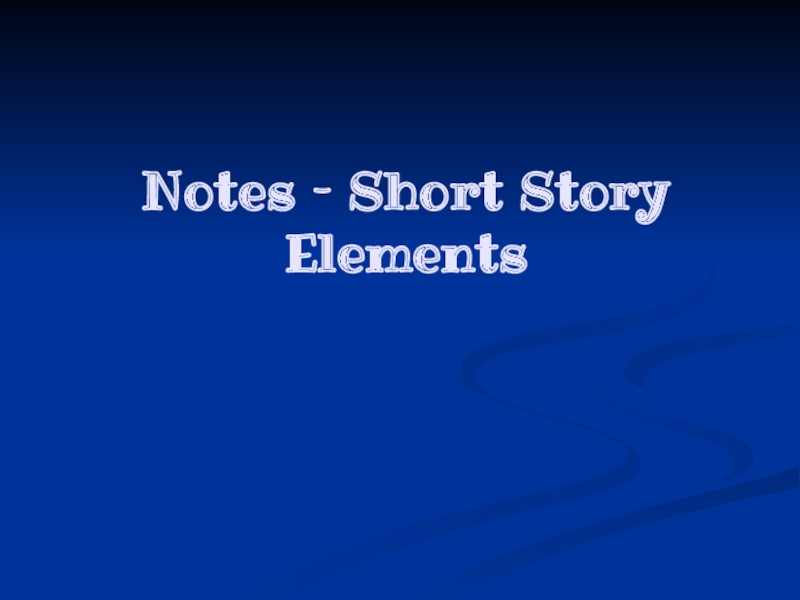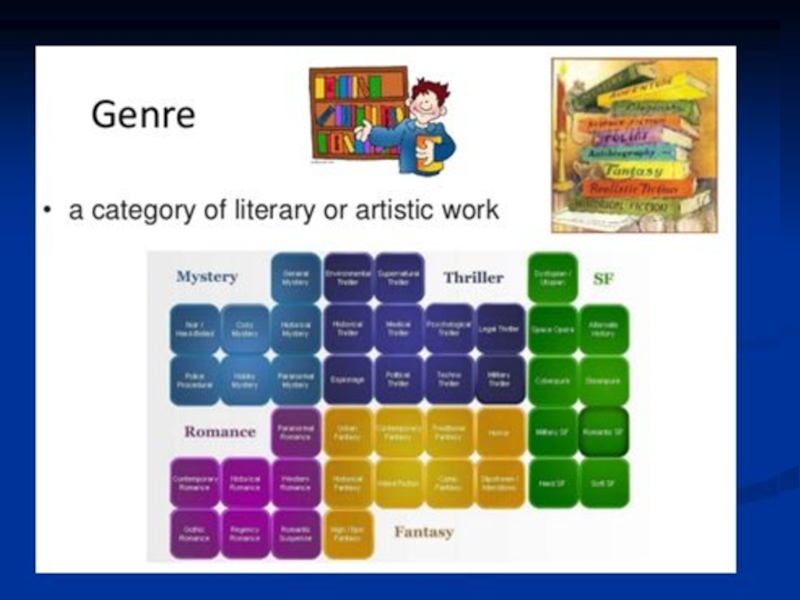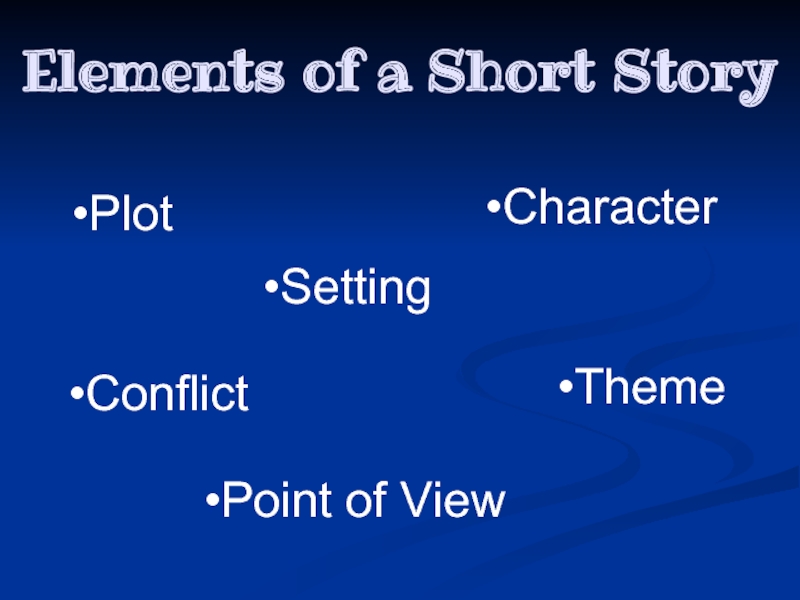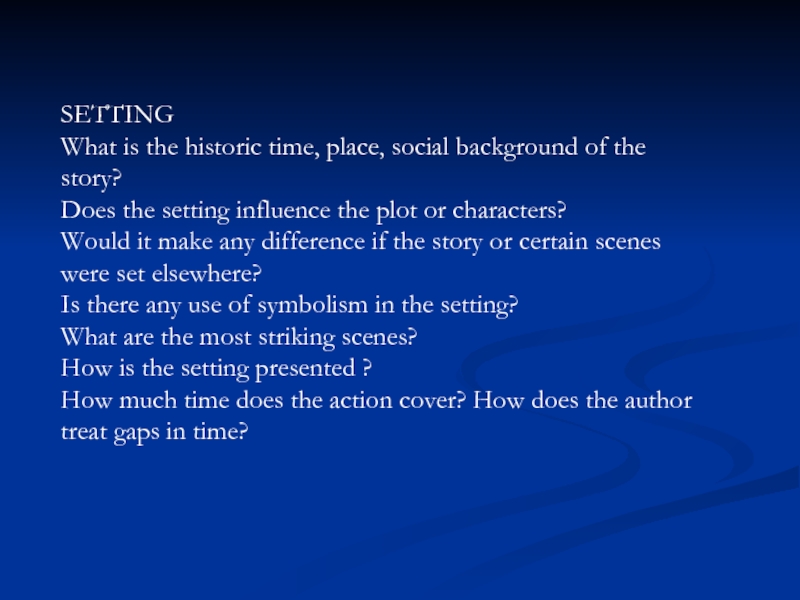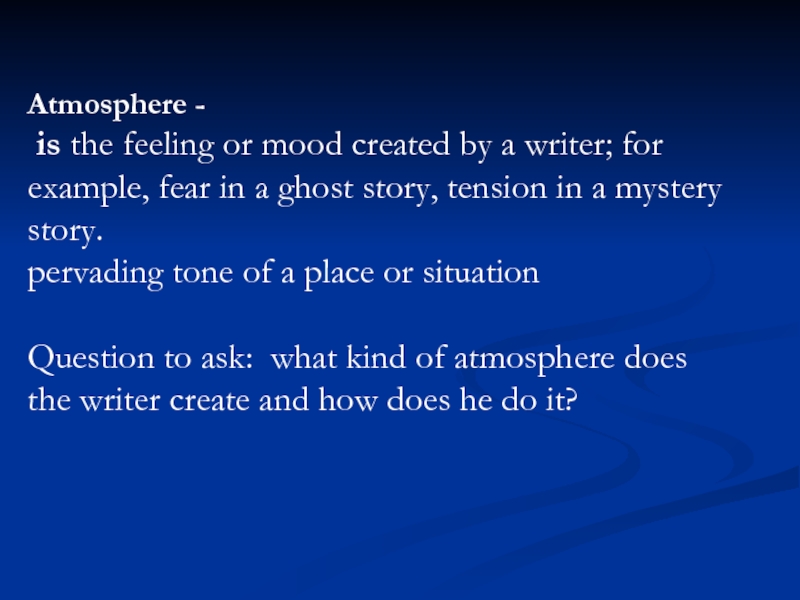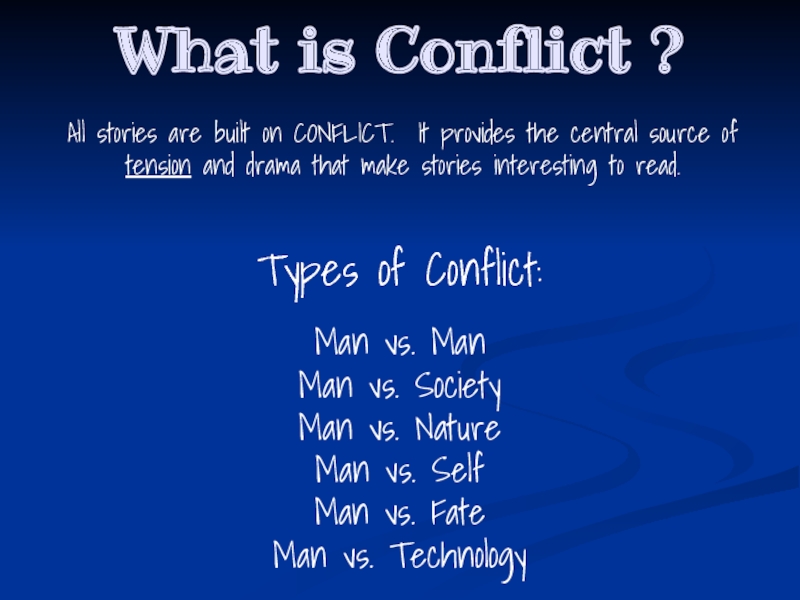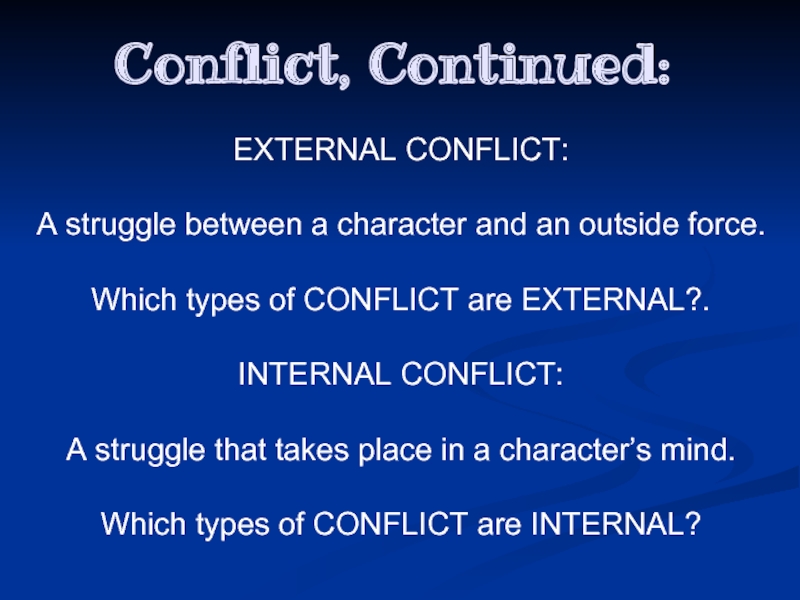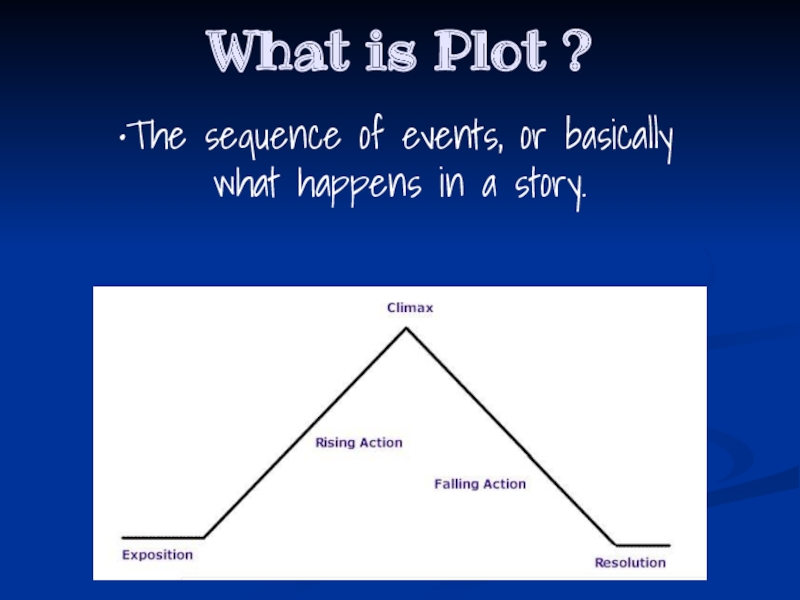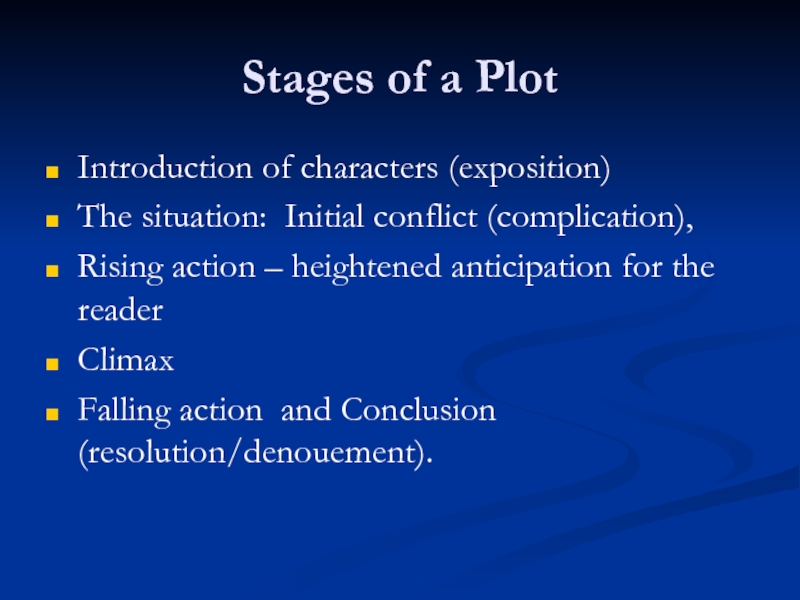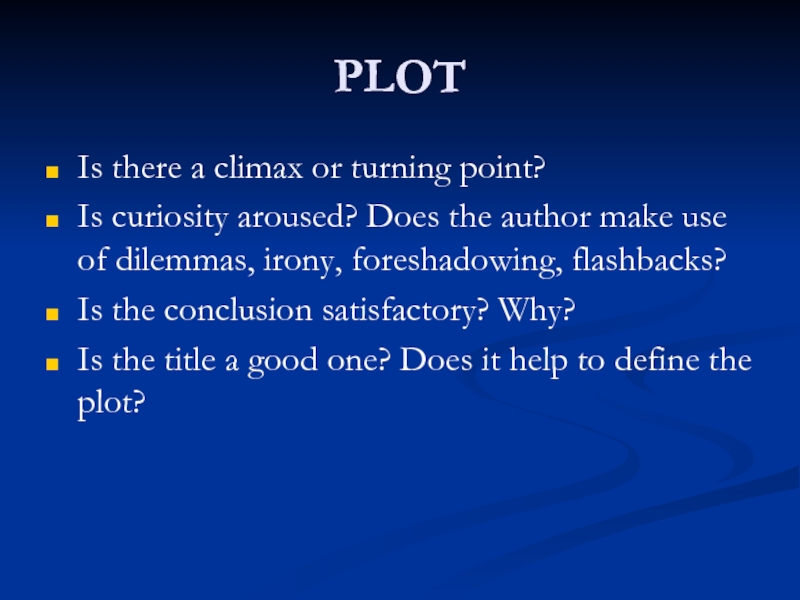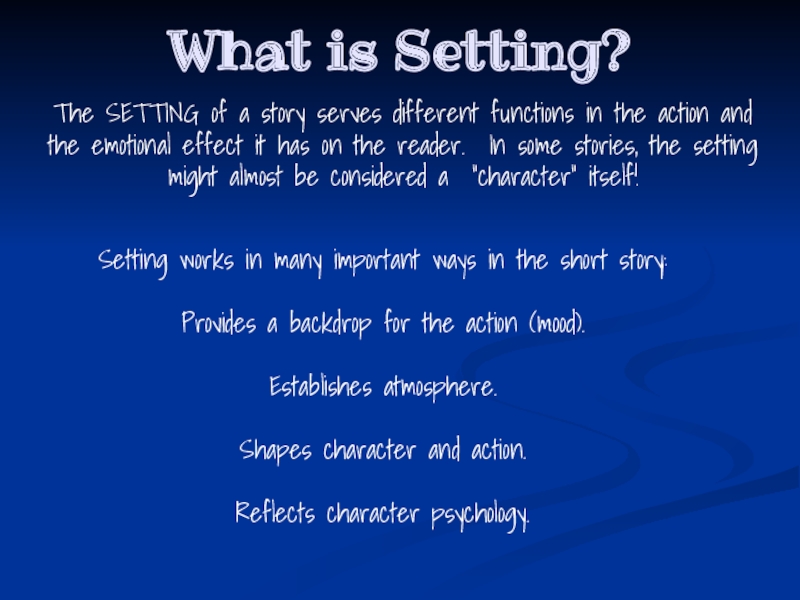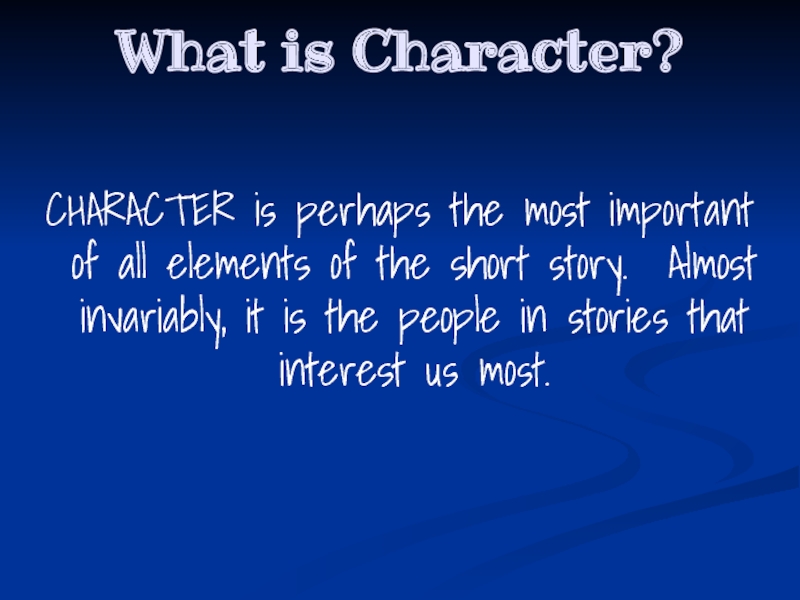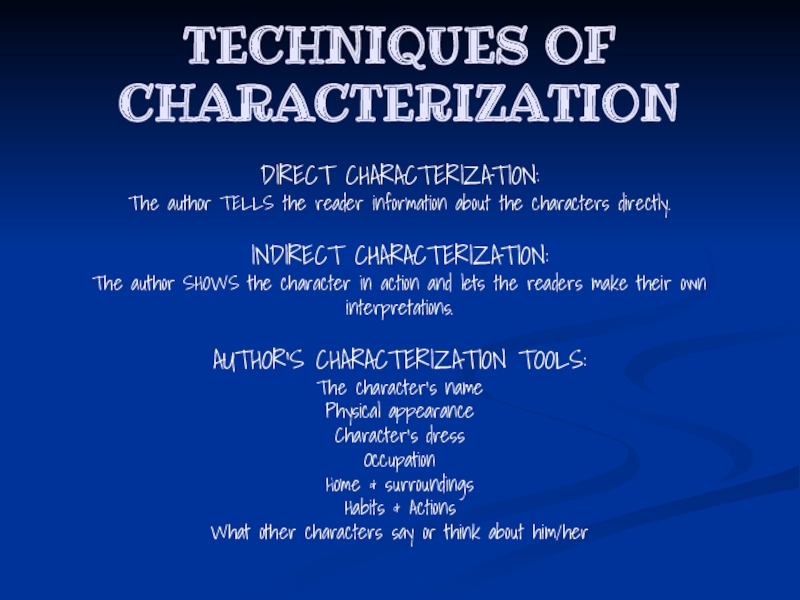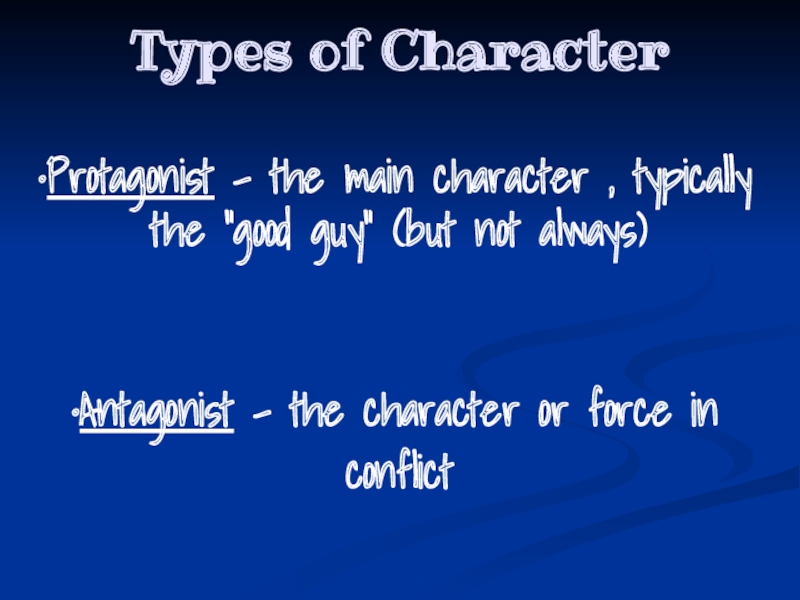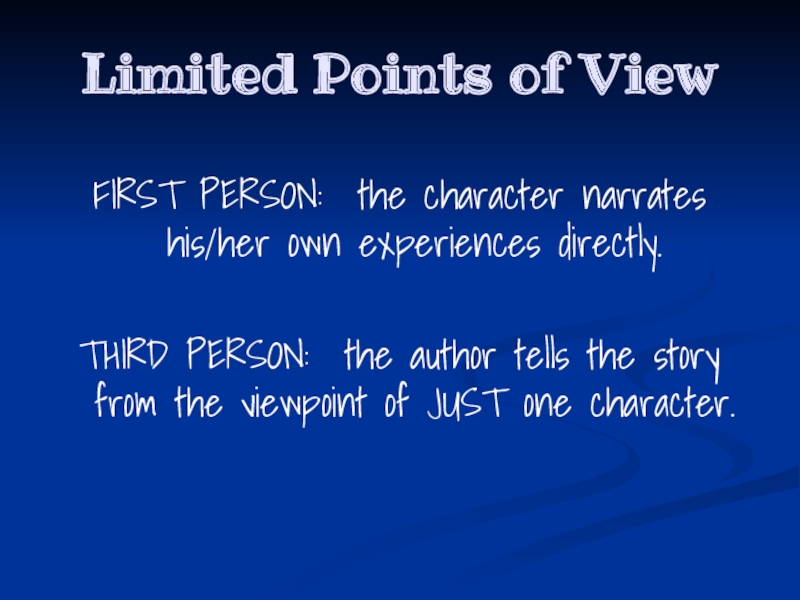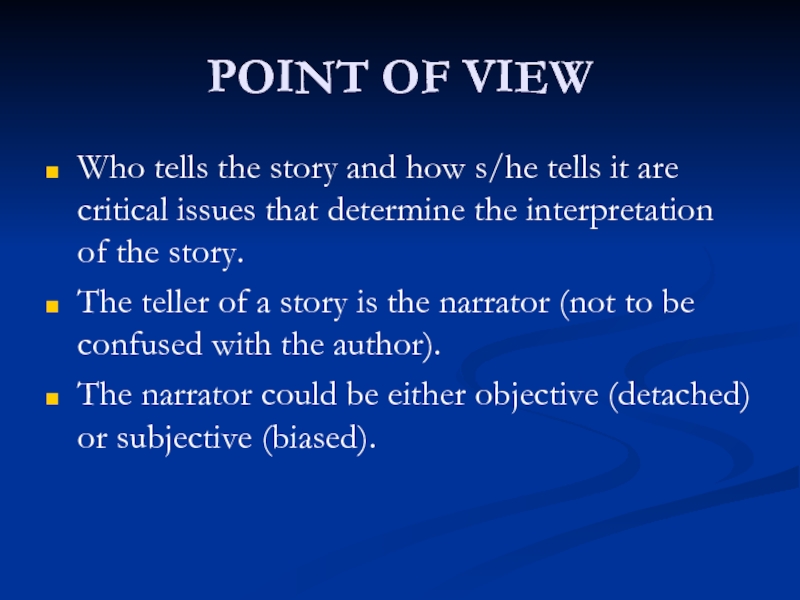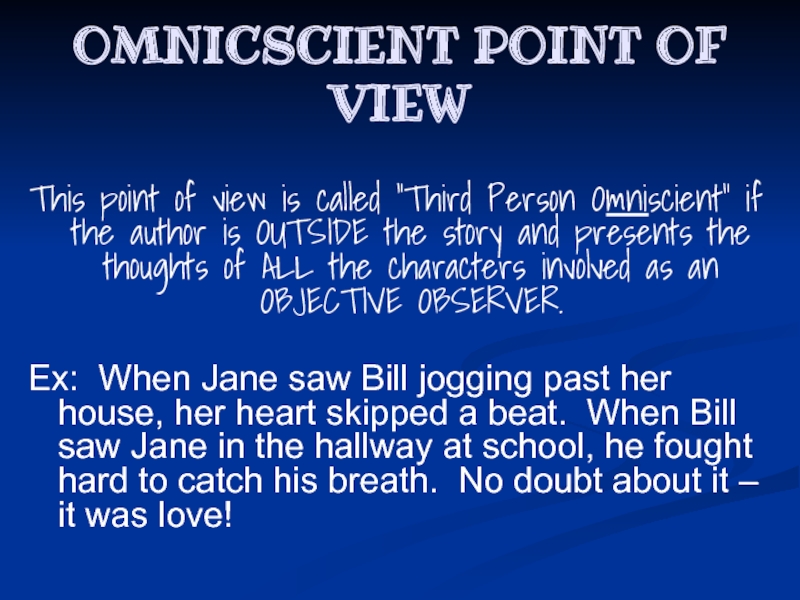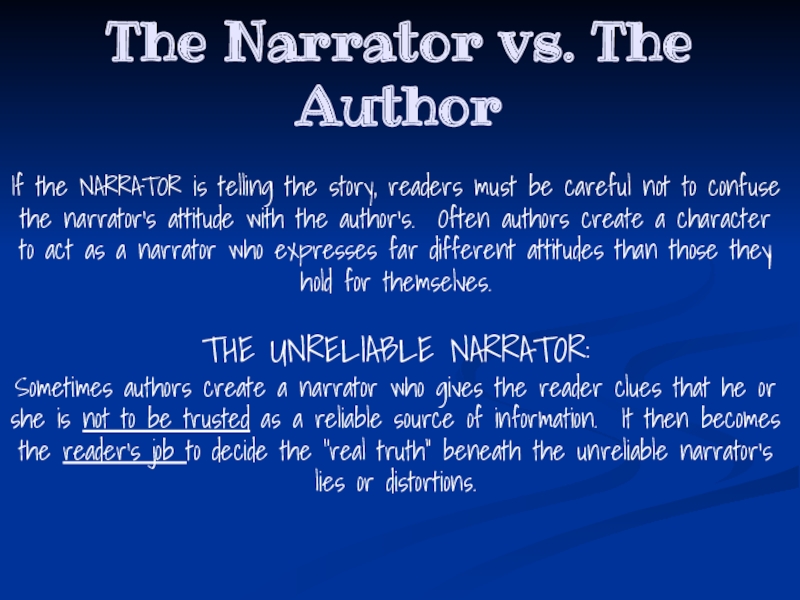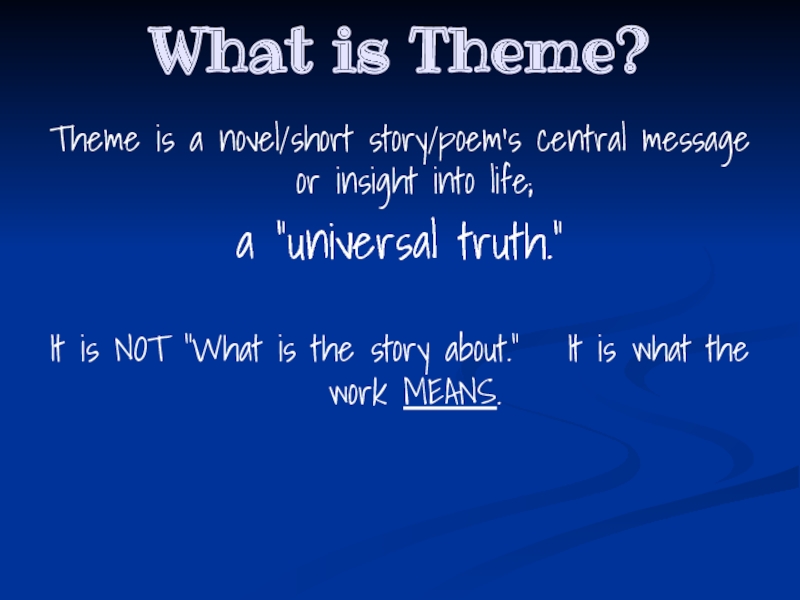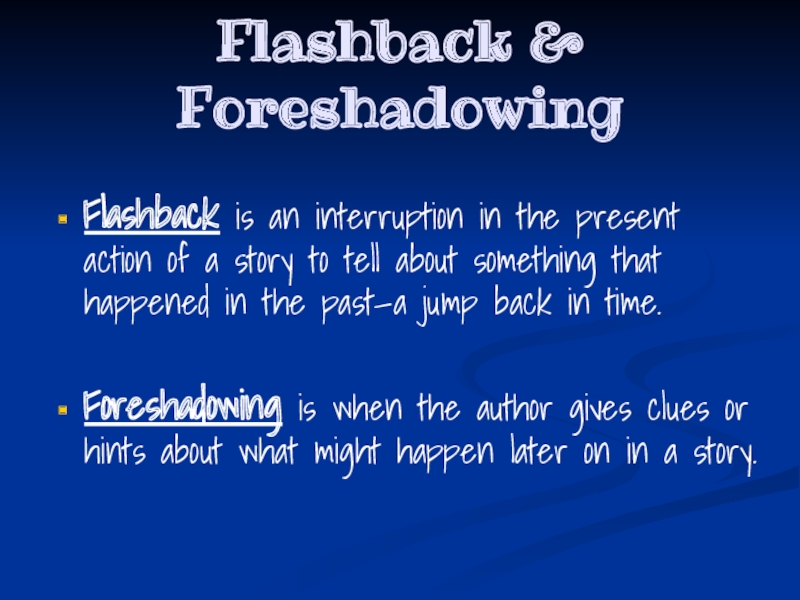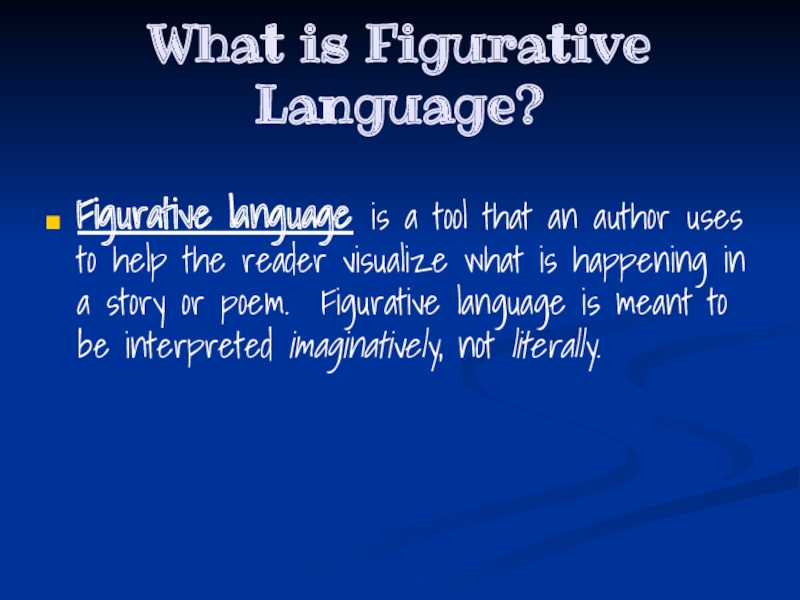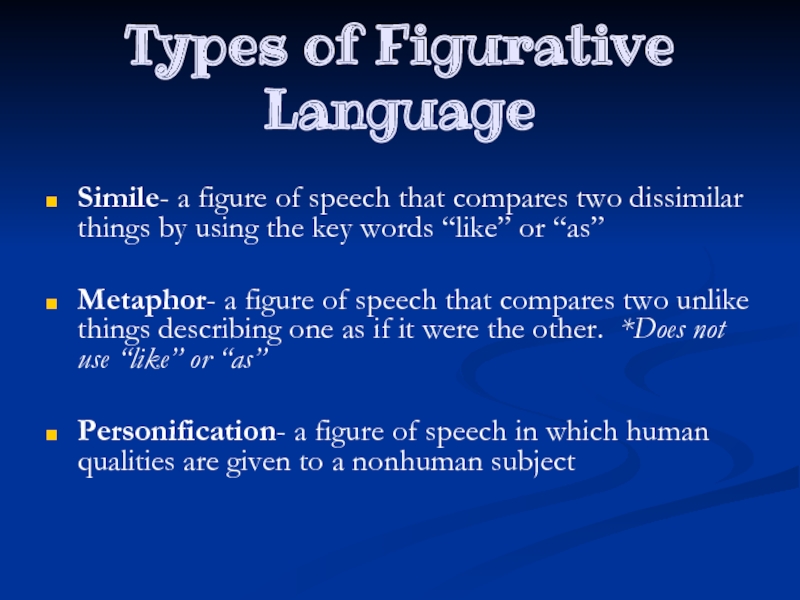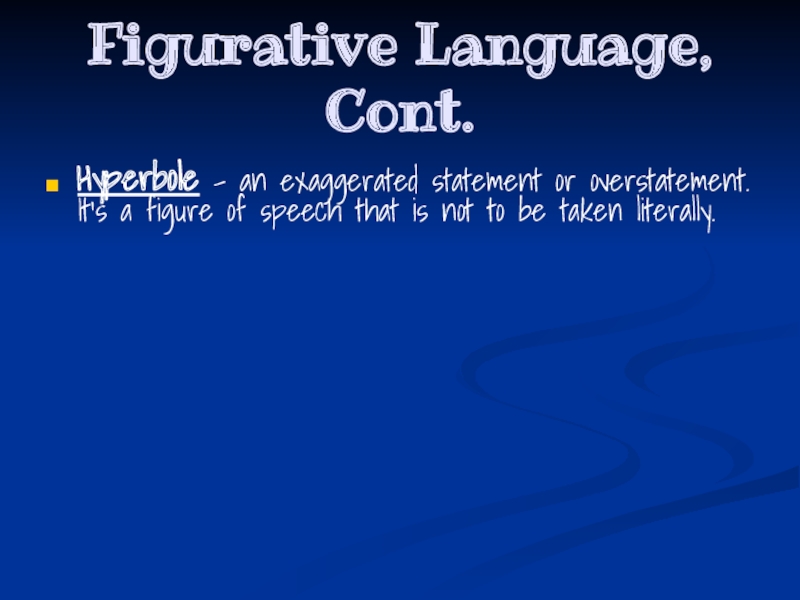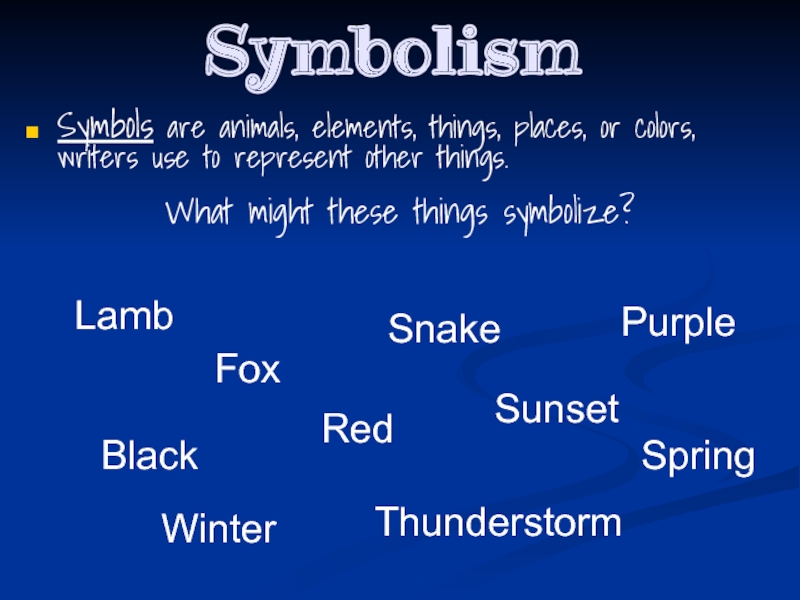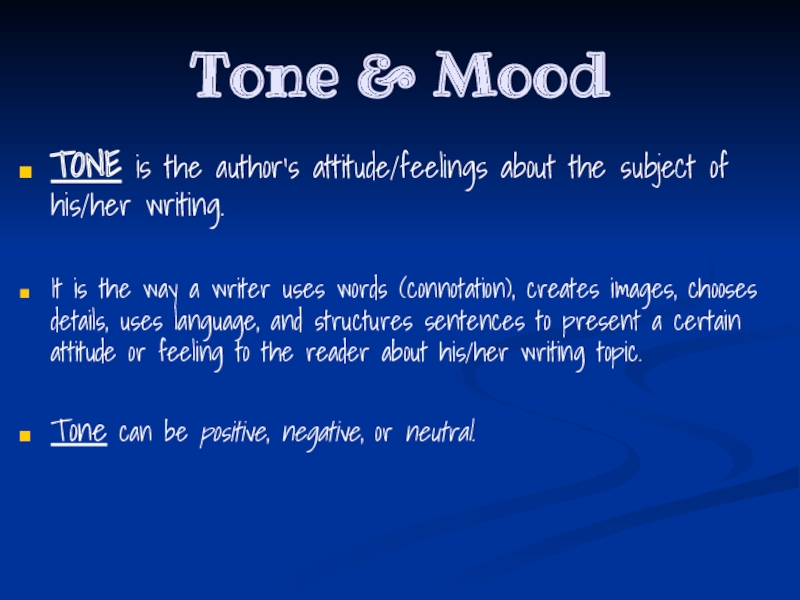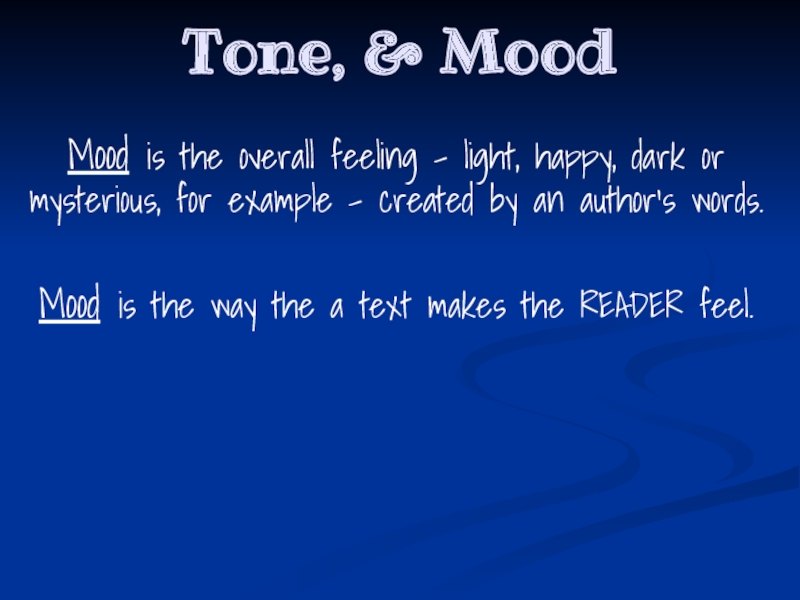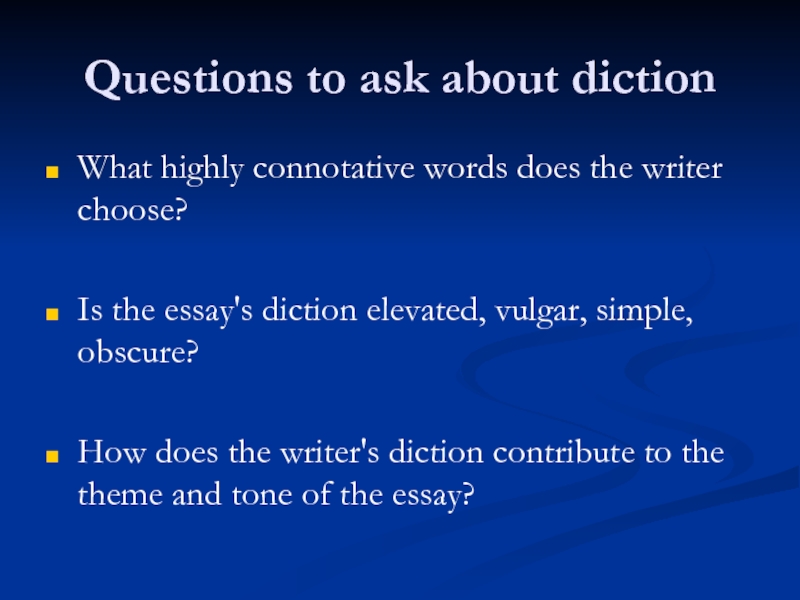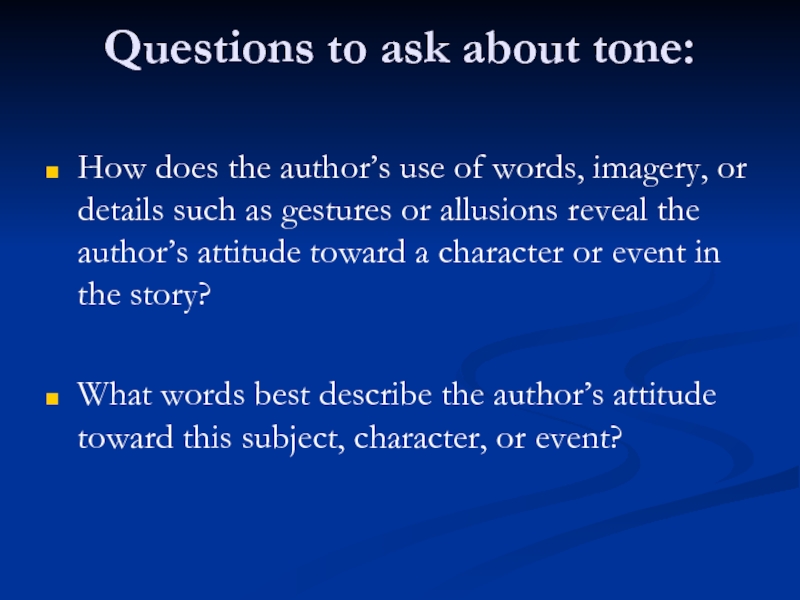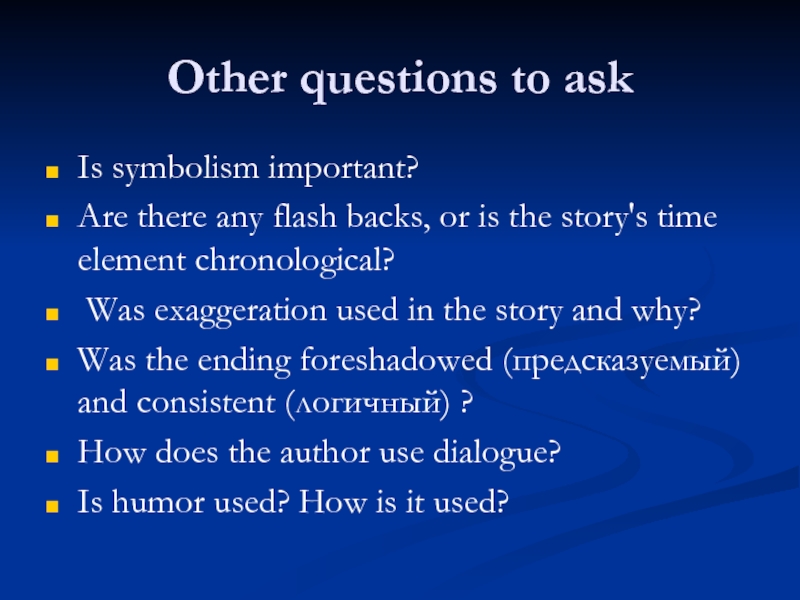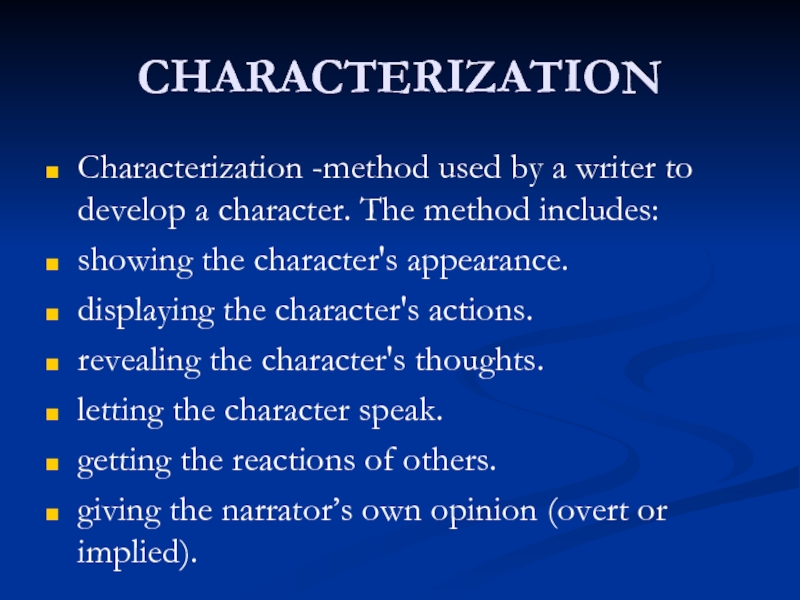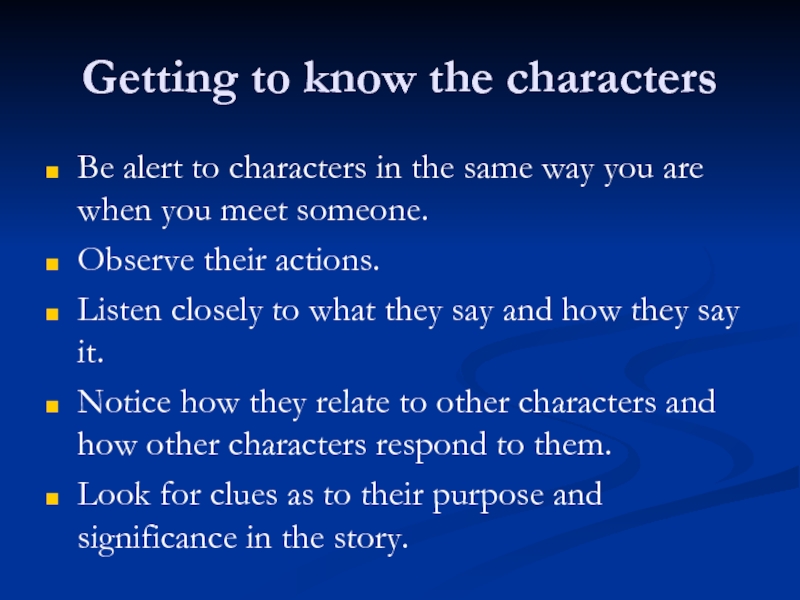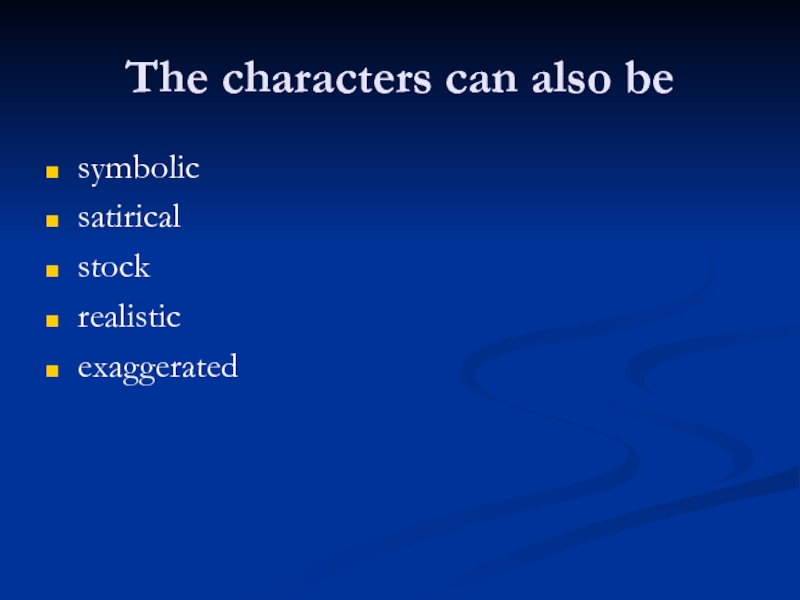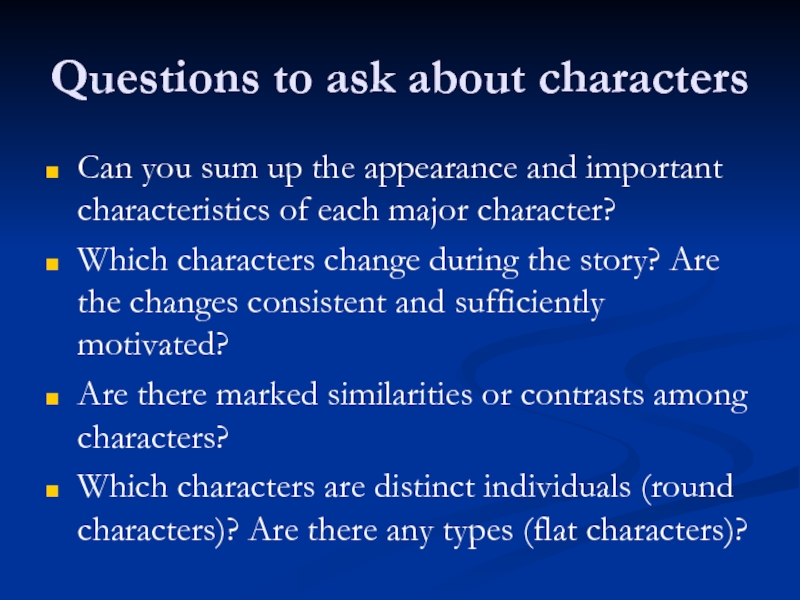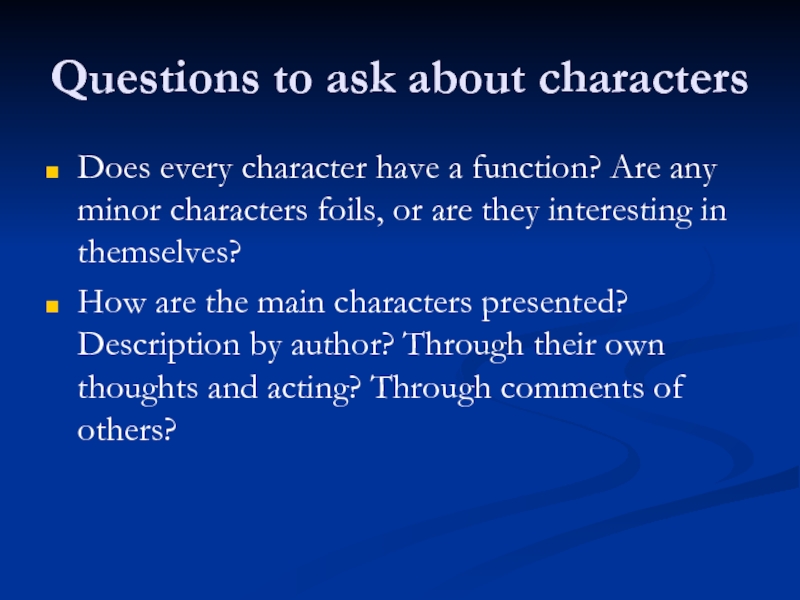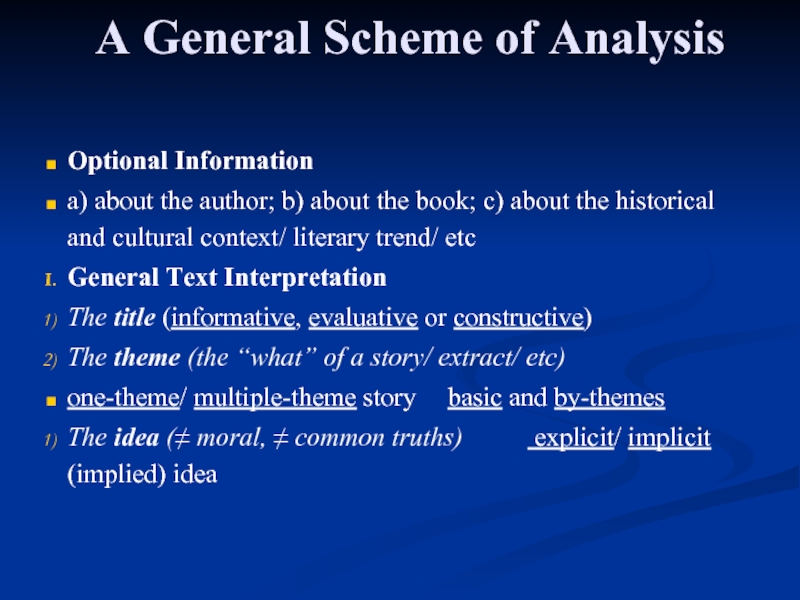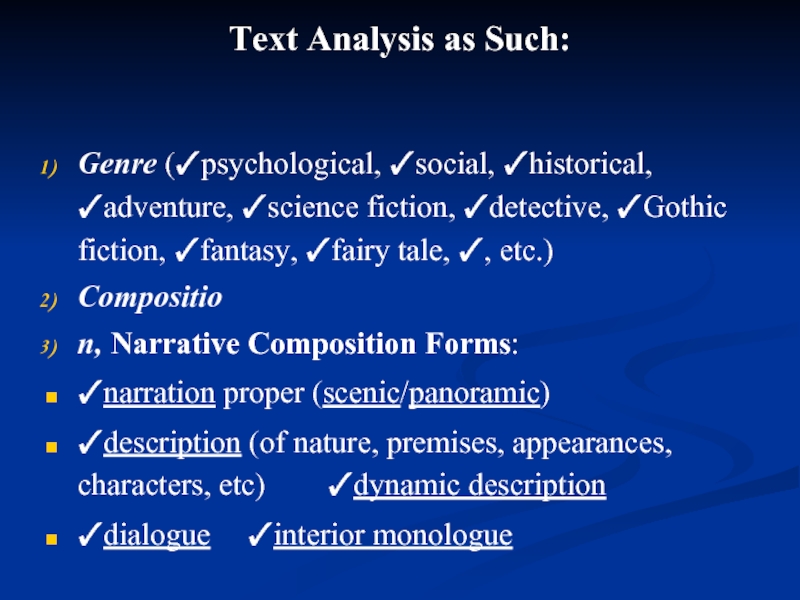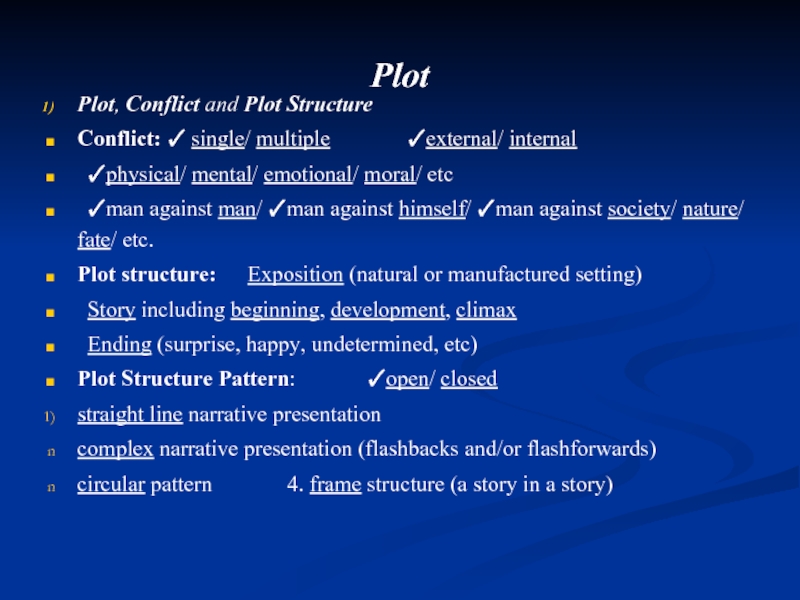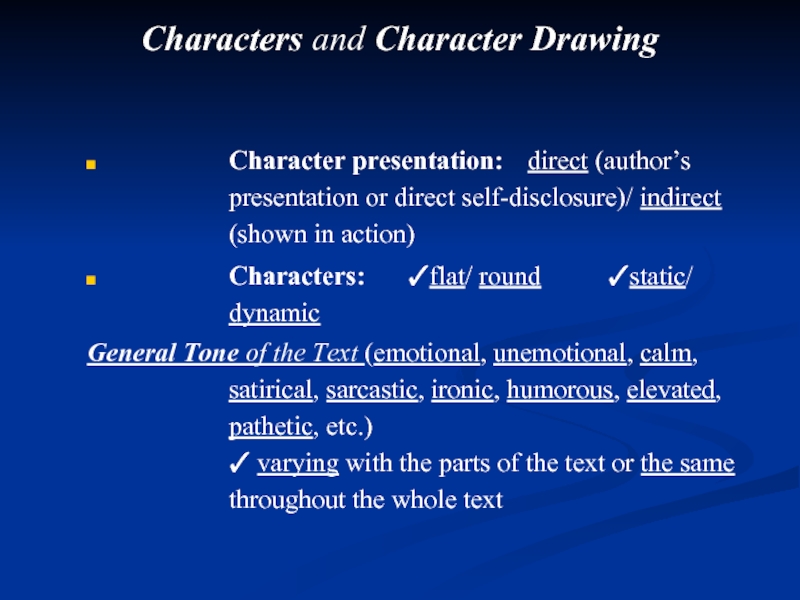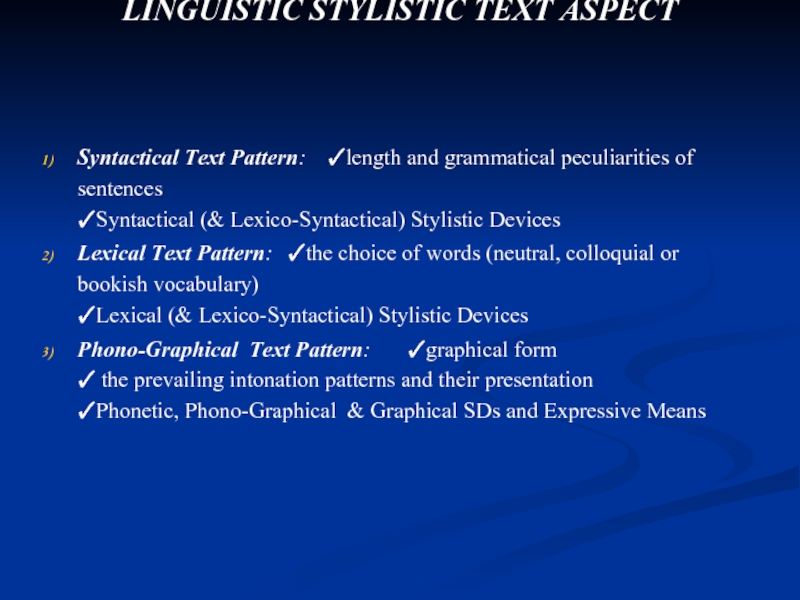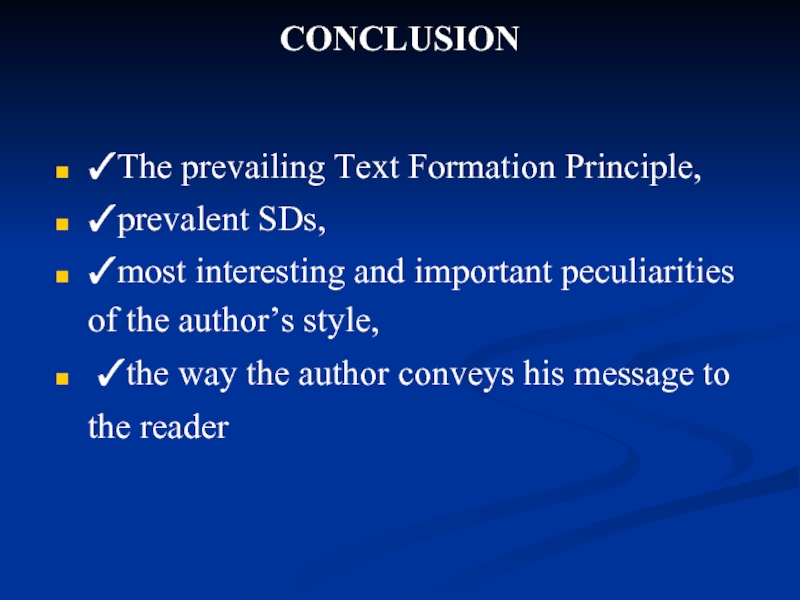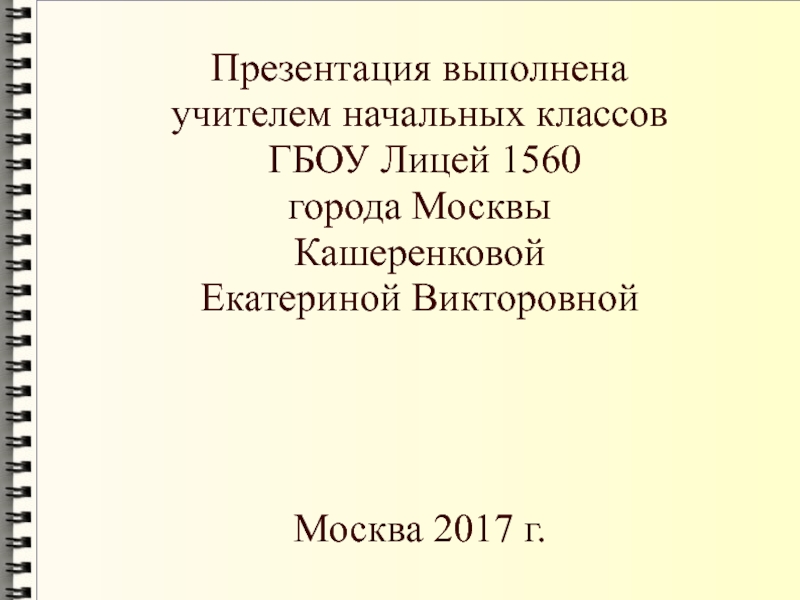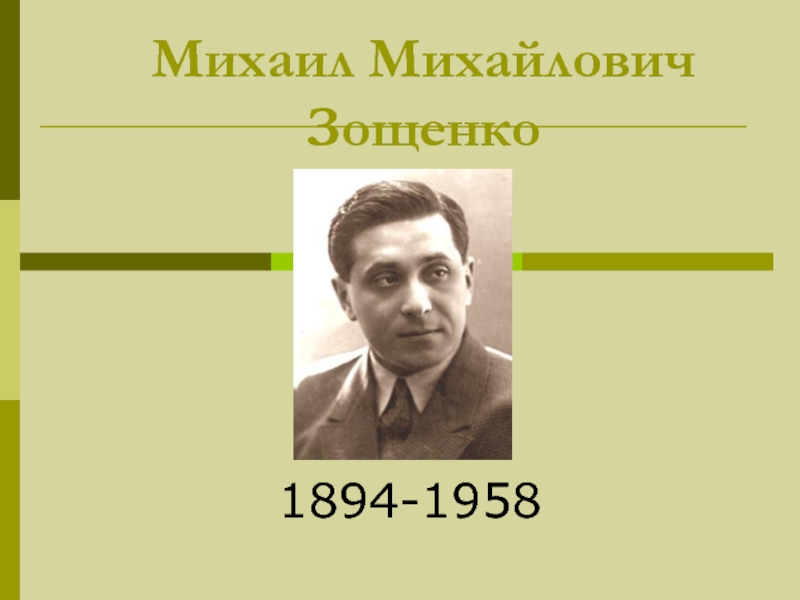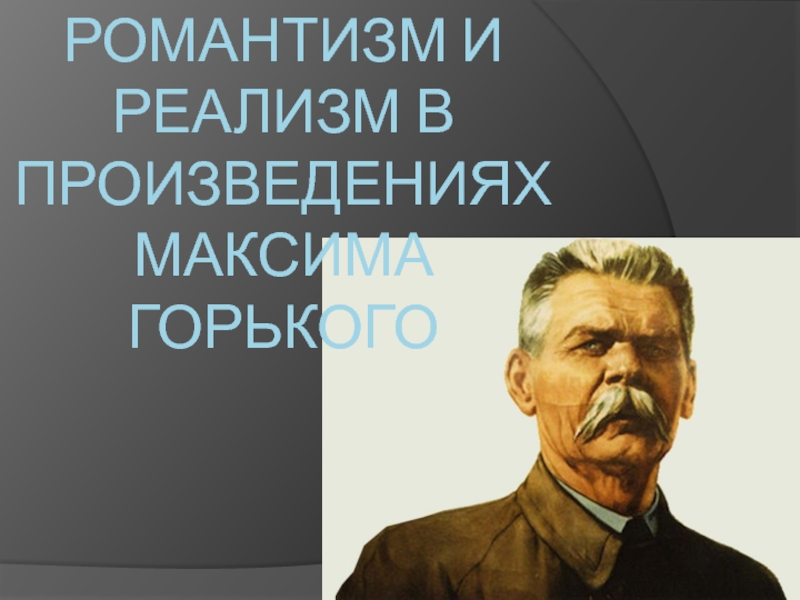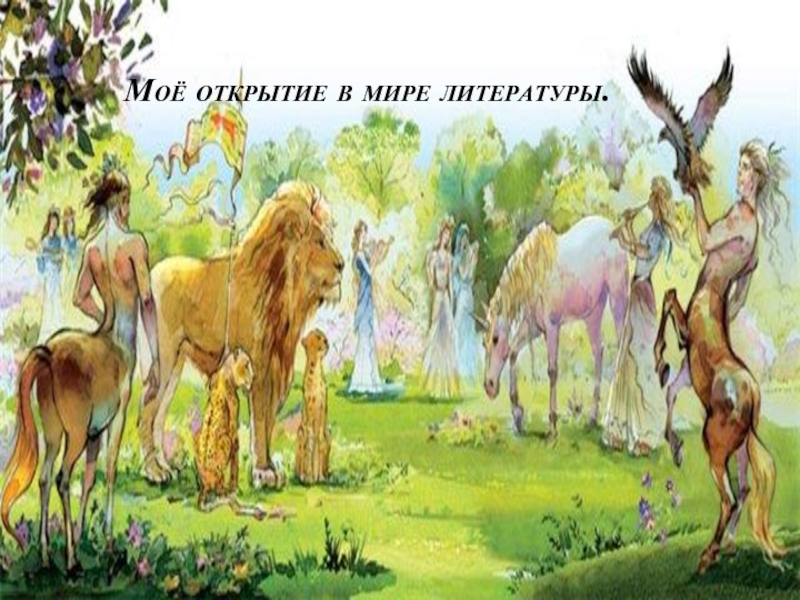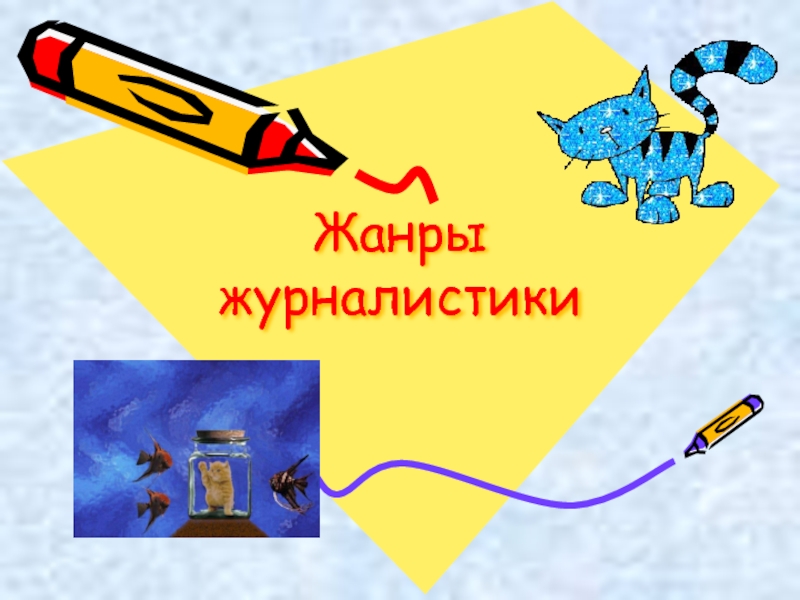- Главная
- Разное
- Дизайн
- Бизнес и предпринимательство
- Аналитика
- Образование
- Развлечения
- Красота и здоровье
- Финансы
- Государство
- Путешествия
- Спорт
- Недвижимость
- Армия
- Графика
- Культурология
- Еда и кулинария
- Лингвистика
- Английский язык
- Астрономия
- Алгебра
- Биология
- География
- Детские презентации
- Информатика
- История
- Литература
- Маркетинг
- Математика
- Медицина
- Менеджмент
- Музыка
- МХК
- Немецкий язык
- ОБЖ
- Обществознание
- Окружающий мир
- Педагогика
- Русский язык
- Технология
- Физика
- Философия
- Химия
- Шаблоны, картинки для презентаций
- Экология
- Экономика
- Юриспруденция
Notes – short story elements. Elements of a short story презентация
Содержание
- 1. Notes – short story elements. Elements of a short story
- 3. Elements of a Short Story Setting Plot Character Conflict Point of View Theme
- 4. SETTING What is the historic time,
- 5. Atmosphere - is the feeling
- 6. What is Conflict ? All stories
- 7. Man vs. Man – involves conflicts between
- 8. Conflict, Continued: EXTERNAL CONFLICT: A
- 9. What is Plot ?
- 10. Stages of a Plot Introduction of characters
- 11. Questions to ask about plot Give a
- 12. PLOT Is there a climax or turning
- 13. What is Setting? The SETTING of a
- 14. What is Character? CHARACTER is perhaps the
- 15. TECHNIQUES OF CHARACTERIZATION DIRECT CHARACTERIZATION: The author
- 16. Types of Character Protagonist – the main
- 17. What is Point of View? The perspective
- 18. Limited Points of View FIRST PERSON: the
- 19. POINT OF VIEW Who tells the story
- 20. OMNICSCIENT POINT OF VIEW This point of
- 21. The Narrator vs. The Author If the
- 22. What is Theme? Theme is a novel/short
- 23. Flashback & Foreshadowing Flashback is an interruption
- 24. What is Figurative Language? Figurative language is
- 25. Types of Figurative Language Simile- a figure
- 26. Figurative Language, Cont. Hyperbole - an exaggerated
- 27. Symbolism Symbols are animals, elements, things, places,
- 28. Tone & Mood TONE is the author’s
- 29. Tone, & Mood Mood is the overall
- 30. Questions to ask about diction What highly
- 31. Questions to ask about tone: How
- 32. Other questions to ask Is symbolism important?
- 33. CHARACTERIZATION Characterization -method used by a writer
- 34. Getting to know the characters Be alert
- 35. The characters can also be symbolic
- 36. Questions to ask about characters Can you
- 37. Questions to ask about characters Does every
- 38. A General Scheme of Analysis Optional
- 39. Text Analysis as Such: Genre
- 40. Plot Plot, Conflict and Plot Structure Conflict: ✓
- 41. Characters and Character Drawing Character
- 42. LINGUISTIC STYLISTIC TEXT ASPECT Syntactical Text
- 43. CONCLUSION ✓The prevailing Text Formation Principle,
Слайд 4SETTING
What is the historic time, place, social background of the
Does the setting influence the plot or characters?
Would it make any difference if the story or certain scenes were set elsewhere?
Is there any use of symbolism in the setting?
What are the most striking scenes?
How is the setting presented ?
How much time does the action cover? How does the author treat gaps in time?
Слайд 5Atmosphere -
is the feeling or mood created by a
pervading tone of a place or situation
Question to ask: what kind of atmosphere does the writer create and how does he do it?
Слайд 6What is Conflict ?
All stories are built on CONFLICT. It provides
Types of Conflict:
Man vs. Man
Man vs. Society
Man vs. Nature
Man vs. Self
Man vs. Fate
Man vs. Technology
Слайд 7Man vs. Man – involves conflicts between people – such as
Man vs. Society – involves conflict between an individual and larger groups – such as the outsider in a strange culture, a poor character’s struggle to “make it” in the business world, etc.
Man vs. Nature – involves conflict between and individual and the natural world – such as fighting a powerful hurricane, surviving a plane crash in the desert, etc.
Man vs. Self – involves characters’ psychological conflicts with themselves – such as overcoming a drug habit or alcoholism, grieving over the loss of a loved one, etc.
Man vs. Fate – involves conflict with what seems to be an uncontrollable problem – such as destiny.
Man vs. Technology – involves a conflict with the forces of man-made technology – such as a robot.
Слайд 8Conflict, Continued:
EXTERNAL CONFLICT:
A struggle between a character and an outside
Which types of CONFLICT are EXTERNAL?.
INTERNAL CONFLICT:
A struggle that takes place in a character’s mind.
Which types of CONFLICT are INTERNAL?
Слайд 10Stages of a Plot
Introduction of characters (exposition)
The situation: Initial conflict (complication),
Rising
Climax
Falling action and Conclusion (resolution/denouement).
Слайд 11Questions to ask about plot
Give a brief synopsis of the story.
Is
Is there a well-defined beginning, middle, and end?
Is there one central episode, or is the plot more episodic with no one outstanding event? If there is more than one action, is there a main plot with sub-plots?
Слайд 12PLOT
Is there a climax or turning point?
Is curiosity aroused? Does the
Is the conclusion satisfactory? Why?
Is the title a good one? Does it help to define the plot?
Слайд 13What is Setting?
The SETTING of a story serves different functions in
Setting works in many important ways in the short story:
Provides a backdrop for the action (mood).
Establishes atmosphere.
Shapes character and action.
Reflects character psychology.
Слайд 14What is Character?
CHARACTER is perhaps the most important of all elements
Слайд 15TECHNIQUES OF
CHARACTERIZATION
DIRECT CHARACTERIZATION:
The author TELLS the reader information about the characters
INDIRECT CHARACTERIZATION:
The author SHOWS the character in action and lets the readers make their own interpretations.
AUTHOR’S CHARACTERIZATION TOOLS:
The character’s name
Physical appearance
Character’s dress
Occupation
Home & surroundings
Habits & Actions
What other characters say or think about him/her
Слайд 16Types of Character
Protagonist – the main character , typically the “good
Antagonist – the character or force in conflict
Слайд 17What is Point of View?
The perspective from which a story is
There are several different POINTS OF VIEW:
Слайд 18Limited Points of View
FIRST PERSON: the character narrates his/her own experiences
THIRD PERSON: the author tells the story from the viewpoint of JUST one character.
Слайд 19POINT OF VIEW
Who tells the story and how s/he tells it
The teller of a story is the narrator (not to be confused with the author).
The narrator could be either objective (detached) or subjective (biased).
Слайд 20OMNICSCIENT POINT OF VIEW
This point of view is called “Third Person
Ex: When Jane saw Bill jogging past her house, her heart skipped a beat. When Bill saw Jane in the hallway at school, he fought hard to catch his breath. No doubt about it – it was love!
Слайд 21The Narrator vs. The Author
If the NARRATOR is telling the story,
THE UNRELIABLE NARRATOR:
Sometimes authors create a narrator who gives the reader clues that he or she is not to be trusted as a reliable source of information. It then becomes the reader’s job to decide the “real truth” beneath the unreliable narrator’s lies or distortions.
Слайд 22What is Theme?
Theme is a novel/short story/poem’s central message or insight
a “universal truth.”
It is NOT “What is the story about.” It is what the work MEANS.
Слайд 23Flashback & Foreshadowing
Flashback is an interruption in the present action of
Foreshadowing is when the author gives clues or hints about what might happen later on in a story.
Слайд 24What is Figurative Language?
Figurative language is a tool that an author
Слайд 25Types of Figurative Language
Simile- a figure of speech that compares two
Metaphor- a figure of speech that compares two unlike things describing one as if it were the other. *Does not use “like” or “as”
Personification- a figure of speech in which human qualities are given to a nonhuman subject
Слайд 26Figurative Language, Cont.
Hyperbole - an exaggerated statement or overstatement. It’s a
Слайд 27Symbolism
Symbols are animals, elements, things, places, or colors, writers use to
What might these things symbolize?
Fox
Snake
Lamb
Red
Black
Purple
Spring
Winter
Sunset
Thunderstorm
Слайд 28Tone & Mood
TONE is the author’s attitude/feelings about the subject of
It is the way a writer uses words (connotation), creates images, chooses details, uses language, and structures sentences to present a certain attitude or feeling to the reader about his/her writing topic.
Tone can be positive, negative, or neutral.
Слайд 29Tone, & Mood
Mood is the overall feeling – light, happy, dark
Mood is the way the a text makes the READER feel.
Слайд 30Questions to ask about diction
What highly connotative words does the writer
Is the essay's diction elevated, vulgar, simple, obscure?
How does the writer's diction contribute to the theme and tone of the essay?
Слайд 31Questions to ask about tone:
How does the author’s use of words,
What words best describe the author’s attitude toward this subject, character, or event?
Слайд 32Other questions to ask
Is symbolism important?
Are there any flash backs,
Was exaggeration used in the story and why?
Was the ending foreshadowed (предсказуемый) and consistent (логичный) ?
How does the author use dialogue?
Is humor used? How is it used?
Слайд 33CHARACTERIZATION
Characterization -method used by a writer to develop a character. The
showing the character's appearance.
displaying the character's actions.
revealing the character's thoughts.
letting the character speak.
getting the reactions of others.
giving the narrator’s own opinion (overt or implied).
Слайд 34Getting to know the characters
Be alert to characters in the same
Observe their actions.
Listen closely to what they say and how they say it.
Notice how they relate to other characters and how other characters respond to them.
Look for clues as to their purpose and significance in the story.
Слайд 36Questions to ask about characters
Can you sum up the appearance and
Which characters change during the story? Are the changes consistent and sufficiently motivated?
Are there marked similarities or contrasts among characters?
Which characters are distinct individuals (round characters)? Are there any types (flat characters)?
Слайд 37Questions to ask about characters
Does every character have a function? Are
How are the main characters presented? Description by author? Through their own thoughts and acting? Through comments of others?
Слайд 38A General Scheme of Analysis
Optional Information
a) about the author; b) about
General Text Interpretation
The title (informative, evaluative or constructive)
The theme (the “what” of a story/ extract/ etc)
one-theme/ multiple-theme story basic and by-themes
The idea (≠ moral, ≠ common truths) explicit/ implicit (implied) idea
Слайд 39Text Analysis as Such:
Genre (✓psychological, ✓social, ✓historical, ✓adventure, ✓science fiction,
Compositio
n, Narrative Composition Forms:
✓narration proper (scenic/panoramic)
✓description (of nature, premises, appearances, characters, etc) ✓dynamic description
✓dialogue ✓interior monologue
Слайд 40Plot
Plot, Conflict and Plot Structure
Conflict: ✓ single/ multiple ✓external/ internal
✓physical/ mental/ emotional/ moral/
✓man against man/ ✓man against himself/ ✓man against society/ nature/ fate/ etc.
Plot structure: Exposition (natural or manufactured setting)
Story including beginning, development, climax
Ending (surprise, happy, undetermined, etc)
Plot Structure Pattern: ✓open/ closed
straight line narrative presentation
complex narrative presentation (flashbacks and/or flashforwards)
circular pattern 4. frame structure (a story in a story)
Слайд 41Characters and Character Drawing
Character presentation: direct (author’s presentation or direct
Characters: ✓flat/ round ✓static/ dynamic
General Tone of the Text (emotional, unemotional, calm, satirical, sarcastic, ironic, humorous, elevated, pathetic, etc.) ✓ varying with the parts of the text or the same throughout the whole text
Слайд 42LINGUISTIC STYLISTIC TEXT ASPECT
Syntactical Text Pattern: ✓length and grammatical peculiarities of
Lexical Text Pattern: ✓the choice of words (neutral, colloquial or bookish vocabulary) ✓Lexical (& Lexico-Syntactical) Stylistic Devices
Phono-Graphical Text Pattern: ✓graphical form ✓ the prevailing intonation patterns and their presentation ✓Phonetic, Phono-Graphical & Graphical SDs and Expressive Means
Слайд 43CONCLUSION
✓The prevailing Text Formation Principle,
✓prevalent SDs,
✓most interesting and important
✓the way the author conveys his message to the reader
